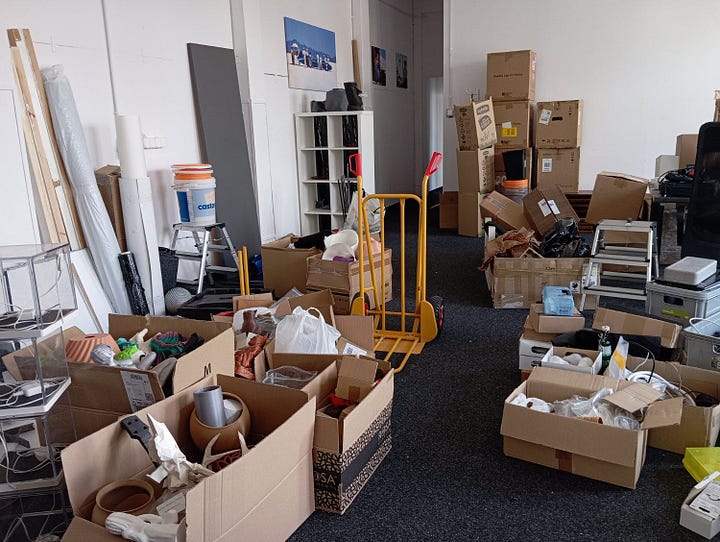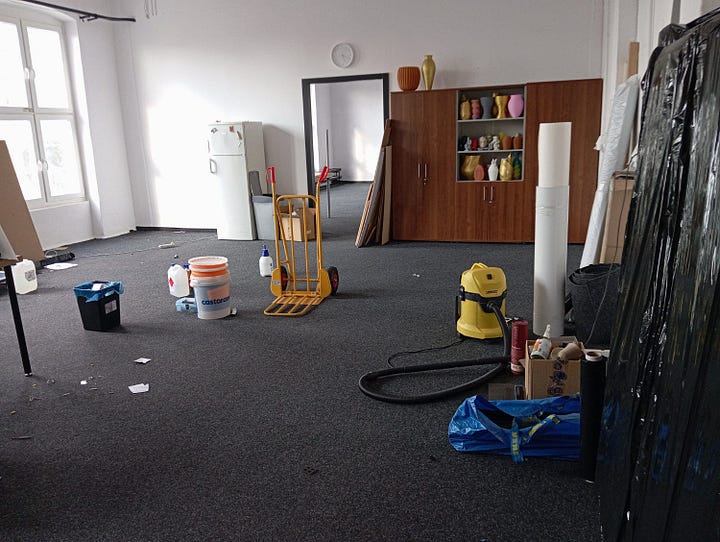A few days ago, the CEO of a company that was once globally recognized in the AM industry reached out to me personally, asking for support in a last-ditch rescue project. The company has been teetering on the edge of collapse for several years, sinking deeper into debt with each passing year.
This rescue project was truly desperate. It has no chance of success and, in my opinion, is doing more harm to the company's already severely damaged reputation than it could ever bring in potential benefits.
However, since I’ve known the CEO for quite a long time, it wouldn’t have been appropriate to simply ignore him. On the other hand, I didn’t really know what to say to him. It was obvious that I wouldn’t get involved in his dramatic project, but at the same time, I didn’t want to leave him without a response.
When you don't know what to say—always tell the truth.
So I called him and made it fairly clear what I thought about the whole thing.
Maybe it's just time to say enough—I asked.
Because, you see, I’ve been in exactly the same situation myself once.
Well, maybe not exactly the same—I never had obligations of such scale—but I also missed the moment when I should have said stop.
I dragged the business on for several months too long, not realizing that it had actually collapsed some time before.
Why founders keep running zombie companies?
I’m not talking about large corporations or publicly traded companies. I’m not talking about businesses where the CEO and management team are "hired guns"—people who came on board after the company was founded and have no emotional connection to it. People who are employees like everyone else—just with the highest salary and the most responsibility.
No, I want to talk about people who built the company from scratch—or at least from a key moment—and left a piece of themselves in it.
For these people, the company is not just a job—it’s an essential part of their lives. They don't exist without each other.
For such founders, shutting down the company is like "amputating" a part of their own body. Imagine someone with a shattered or infected (rotten) leg who still refuses to allow it to be amputated.
Truly, in business, the hardest decision is recognizing when it’s time to end an unprofitable venture.
You can stop paying yourself a salary. You can stop paying your employees. You can stop paying anyone at all. But closing the company feels like the greatest failure one can experience in a professional career.
This is exactly why so many founders or CEOs keep pushing forward with doomed ventures, sinking deeper into financial and organizational losses.
It’s purely an issue of personal ambition. Business owners closely identify with their ventures and see their potential failure as a personal defeat, rather than a natural part of running a business.
What was once their greatest source of pride becomes their greatest source of shame.
There are only two things in life a person never will ask for more of:
more physical pain
more shame
These are the two things a human being would rather die than endure.
Another issue is the psychological trap known as the sunk cost fallacy.
This is the belief that, since significant financial resources, time, and energy have already been invested, backing out would mean those losses were in vain. But in reality, those losses have already been incurred, and continuing unprofitable activities only deepens them.
I call it drowning while trying to swim to the surface.
Another factor that prevents people from making tough decisions is the fear of negative judgment from the business community. Entrepreneurs fear that admitting to a mistake will be perceived as incompetence.
Yet often the worst possible scenario is clinging to a strategy that no longer makes sense.
This also depends somewhat on where you operate. In the United States, the failure of a company or startup is seen more naturally. In some industries—especially in new technologies—a founder who has failed is considered more valuable because they already know what failure tastes like and “have learned from their mistakes.”
But in Europe—especially in Central and Eastern Europe—bankruptcy is associated with being a complete loser.
Only incompetent people fail. Savvy businessmen always manage to escape trouble unscathed. Even if they have to steal or deceive people.
(Seriously, in countries like Poland, collapsing under debt is seen as disgraceful—while escaping debt through shady dealings or outright criminal behavior is, by some, regarded as cleverness and survival skills.)
Finally, one of the most dangerous things is hope—the hope for a future breakthrough, even when there is no real foundation or indicators to support it.
When to close a company
Usually, the realization that it’s time to close a company comes too late. Sometimes by several months (as was the case for me), or even several years (as is the case for many AM companies still operating on the market).
If I were to point to absolute red flags, they would be as follows:
not paying salaries (or delays stretching over several months),
not paying taxes or other government obligations (such as social security contributions for employees),
not paying for rented office or production facility.
If even one of these three factors suddenly appears, it means it’s already too late. It should have been done at least a month earlier.
(Fortunately, we paid our employees’ salaries until the very end—but we stopped paying ourselves for the last few months before closing. Today, I look at that as madness and pure foolishness…)
Prolonged negative financial results that cannot be reversed despite the implementation of corrective actions are another warning sign that cannot be ignored.
A significant symptom is also the burnout of both the owner and the team. If we no longer feel like coming to our own company, it really means it’s the end.
The process of withdrawing from an unprofitable business should begin with a strictly honest and objective financial analysis. The financial data must be assessed without emotions, focusing on facts rather than subjective feelings.
It is worthwhile to consult the situation with trusted individuals: advisors, business partners, mentors, or industry experts who can provide a fresh perspective and help assess the situation without internal emotional bias.
Finally, appropriate communication is key—towards the team, clients, and business partners.
Honest, transparent presentation of the reasons behind the decision builds trust and can make it easier to navigate through this difficult period.
There is no need for long speeches in such moments. In most cases, the team has known for much longer than the founder that they are heading straight for an iceberg—they are simply waiting for the order to start boarding the lifeboats.
I simply said, "Guys, this is what the end looks like. This is as far as we can go…"
And then we just started cleaning up and emptying the office and the production hall.
The Aftermath


When I was closing the company, it felt like the end of my world (one day I will write a separate article about this). The following weeks were extremely hard.
Emphasis on extremely hard.
But you know what? It was only after I closed the unprofitable company that I started writing my first articles on LinkedIn. Only a month later did I start The 3D Printing Journal.
And now I’m here with you. And I’m working with Bambu Lab.
If I regret anything, it’s not that I closed the unprofitable business—but that I didn’t close it sooner. That I hesitated.
Why? Out of fear? Out of shame?
It really wasn’t worth dragging it on for so long.
And I wish the other people - like my CEO friend - could only look at it the same way I do now…
PS: If you are working in the AM industry and are struggling with the dilemmas I’ve described—let me know. Maybe I can offer you some advice.






I would've advised him to leave the crypto issue aside and hive a rights issue 1:1 at 0.06 pln
At 120 mln shares, this would give a capital injection of 7mln pln. In a year, with positive company projects and sales, it would be easy to go for 'scalenie' 10:1. Problem solved in 1 to 3 months.
I'm sure all the Managers with Family Trusts holding around 80 percent of shares would be glad to invest and save the Company. We do know that we are talking of a Polish 'rising star' that shown with artificial lighting:)
Is it Ric?